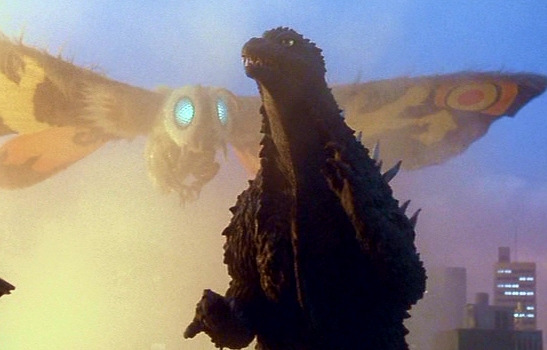They allowed this to happen, and when it did happen they covered it up like it was no big deal. Forget "blame"...heads should roll.
https://en.wikipedia.org/wiki/Fukushima_Daiichi_nuclear_disaster
"1991: Backup generator of reactor 1 flooded[edit]
On 30 October 1991, one of two backup generators of Reactor 1 failed, after flooding in the reactor's basement. Seawater used for cooling leaked into the turbine building from a corroded pipe at 20 cubic meters per hour, as reported by former employees in December 2011. An engineer was quoted as saying that he informed his superiors of the possibility that a tsunami could damage the generators. TEPCO installed doors to prevent water from leaking into the generator rooms.
The Japanese Nuclear Safety Commission stated that it would revise its safety guidelines and would require the installation of additional power sources. On 29 December 2011, TEPCO admitted all these facts: its report mentioned that the room was flooded through a door and some holes for cables, but the power supply was not cut off by the flooding, and the reactor was stopped for one day. One of the two power sources was completely submerged, but its drive mechanism had remained unaffected."
"2008: Tsunami study ignored[edit]
In 2007, TEPCO set up a department to supervise its nuclear facilities. Until June 2011 its chairman was Masao Yoshida, the Fukushima Daiichi chief. A 2008 in-house study identified an immediate need to better protect the facility from flooding by seawater. This study mentioned the possibility of tsunami-waves up to 10.2 metres (33 ft). Headquarters officials insisted that such a risk was unrealistic and did not take the prediction seriously.[79][verification needed]
A Mr. Okamura of the Active Fault and Earthquake Research Center urged TEPCO and NISA to review their assumption of possible tsunami heights based on a tenth century earthquake, but it was not seriously considered at that time.[80] The U.S. Nuclear Regulatory Commission warned of a risk of losing emergency power in 1991 (NUREG-1150) and NISA referred to the report in 2004. No action to mitigate the risk was taken."
"Government agencies and TEPCO were unprepared for the "cascading nuclear disaster".[184] The tsunami that "began the nuclear disaster could and should have been anticipated and that ambiguity about the roles of public and private institutions in such a crisis was a factor in the poor response at Fukushima".[184] In March 2012, Prime Minister Yoshihiko Noda said that the government shared the blame for the Fukushima disaster, saying that officials had been blinded by a false belief in the country's "technological infallibility", and were taken in by a "safety myth". Noda said "Everybody must share the pain of responsibility."[185]
According to Naoto Kan, Japan's prime minister during the tsunami, the country was unprepared for the disaster, and nuclear power plants should not have been built so close to the ocean.[186] Kan acknowledged flaws in authorities' handling of the crisis, including poor communication and coordination between nuclear regulators, utility officials and the government. He said the disaster "laid bare a host of an even bigger man-made vulnerabilities in Japan's nuclear industry and regulation, from inadequate safety guidelines to crisis management, all of which he said need to be overhauled."[186]
Physicist and environmentalist Amory Lovins said that Japan's "rigid bureaucratic structures, reluctance to send bad news upwards, need to save face, weak development of policy alternatives, eagerness to preserve nuclear power's public acceptance, and politically fragile government, along with TEPCO's very hierarchical management culture, also contributed to the way the accident unfolded. Moreover, the information Japanese people receive about nuclear energy and its alternatives has long been tightly controlled by both TEPCO and the government.""
"Poor communication and delays
The Japanese government did not keep records of key meetings during the crisis.[188] Data from the SPEEDI network were emailed to the prefectural government, but not shared with others. Emails from NISA to Fukushima, covering 12 March 11:54 PM to 16 March 9 AM and holding vital information for evacuation and health advisories, went unread and were deleted. The data was not used because the disaster countermeasure office regarded the data as "useless because the predicted amount of released radiation is unrealistic."[189] On 14 March 2011 TEPCO officials were instructed not to use the phrase "core meltdown" at press conferences.[190]
On the evening of March 15, Prime Minister Kan called Seiki Soramoto, who used to design nuclear plants for Toshiba, to ask for his help in managing the escalating crisis. Soramoto formed an impromptu advisory group, which included his former professor at the University of Tokyo, Toshiso Kosako, a top Japanese expert on radiation measurement. Mr. Kosako, who studied the Soviet response to the Chernobyl crisis, said he was stunned at how little the leaders in the prime minister’s office knew about the resources available to them. He quickly advised the chief cabinet secretary, Yukio Edano, to use SPEEDI, which used measurements of radioactive releases, as well as weather and topographical data, to predict where radioactive materials could travel after being released into the atmosphere.[191]
The Investigation Committee on the Accident at the Fukushima Nuclear Power Stations of Tokyo Electric Power Company's interim report stated that Japan's response was flawed by "poor communication and delays in releasing data on dangerous radiation leaks at the facility". The report blamed Japan's central government as well as TEPCO, "depicting a scene of harried officials incapable of making decisions to stem radiation leaks as the situation at the coastal plant worsened in the days and weeks following the disaster".[192] The report said poor planning worsened the disaster response, noting that authorities had "grossly underestimated tsunami risks" that followed the magnitude 9.0 earthquake. The 12.1 metre (40 ft) high tsunami that struck the plant was double the height of the highest wave predicted by officials. The erroneous assumption that the plant's cooling system would function after the tsunami worsened the disaster. "Plant workers had no clear instructions on how to respond to such a disaster, causing miscommunication, especially when the disaster destroyed backup generators."[192]
In February 2012, the Rebuild Japan Initiative Foundation described how Japan's response was hindered by a loss of trust between the major actors: Prime Minister Kan, TEPCO's Tokyo headquarters and the plant manager. The report said that these conflicts "produced confused flows of sometimes contradictory information".[193][194] According to the report, Kan delayed the cooling of the reactors by questioning the choice of seawater instead of fresh water, accusing him of micromanaging response efforts and appointing a small, closed, decision-making staff. The report stated that the Japanese government was slow to accept assistance from U.S. nuclear experts.[195]
A 2012 report in The Economist said: "The operating company was poorly regulated and did not know what was going on. The operators made mistakes. The representatives of the safety inspectorate fled. Some of the equipment failed. The establishment repeatedly played down the risks and suppressed information about the movement of the radioactive plume, so some people were evacuated from more lightly to more heavily contaminated places".[196]
From 17 to 19 March 2011, US military aircraft measured radiation within a 45-km radius of the site. The data recorded 125 microsieverts per hour of radiation as far as 25 km (15.5 mi) northwest of the plant. The US provided detailed maps to the Japanese Ministry of Economy, Trade, and Industry (METI) on 18 March and to the Ministry of Education, Culture, Sports, Science and Technology (MEXT) two days later, but officials did not act on the information.[197]
The data were not forwarded to the prime minister's office or the Nuclear Safety Commission (NSC), nor were they used to direct the evacuation. Because a substantial portion of radioactive materials reached ground to the northwest, residents evacuated in this direction were unnecessarily exposed to radiation. According to NSC chief Tetsuya Yamamoto, "It was very regrettable that we didn't share and utilize the information." Itaru Watanabe, from the Science and Technology Policy Bureau, blamed the US for not releasing the data.[198]
Data on the dispersal of radioactive materials were provided to the U.S. forces by the Japanese Ministry for Science a few days after March 11; however, the data was not shared publicly until the Americans published their map on March 23, at which point Japan published fallout maps compiled from ground measurements and SPEEDI the same day.[199] According to Watanabe's testimony before the Diet, the US military was given access to the data "to seek support from them" on how to deal with the nuclear disaster. Although SPEEDI's effectiveness was limited by not knowing the amounts released in the disaster, and thus was considered "unreliable", it was still able to forecast dispersal routes and could have been used to help local governments designate more appropriate evacuation routes.[200]
On 19 June 2012, science minister Hirofumi Hirano stated that his "job was only to measure radiation levels on land" and that the government would study whether disclosure could have helped in the evacuation efforts.[199]
On 28 June 2012 Nuclear and Industrial Safety Agency officials apologized to mayor Yuko Endo of Kawauchi Village for NISA having failed to release the American-produced radiation maps in the first days after the meltdowns. All residents of this village were evacuated after the government designated it a no-entry zone. According to a Japanese government panel, authorities had shown no respect for the lives and dignity of village people. One NISA official apologized for the failure and added that the panel had stressed the importance of disclosure; however, the mayor said that the information would have prevented the evacuation into highly polluted areas, and that apologies a year too late had no meaning.[201]
In June 2016, it was revealed that TEPCO officials had been instructed on 14 March 2011 not to describe the reactor damage using the word "meltdown". Officials at that time were aware that 25–55% of the fuel had been damaged, and the threshold for which the term "meltdown" became appropriate (5%) had been greatly exceeded. TEPCO President Naomi Hirose told the media: "I would say it was a cover-up... It’s extremely regrettable.”"




